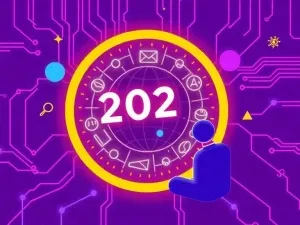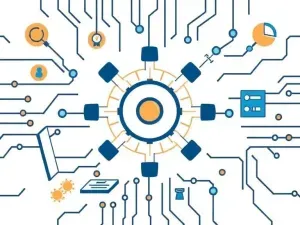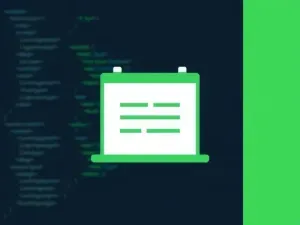Introduction: The Silent Revolution of Web Development
Web development is undergoing a radical transformation in 2025. What began as a gradual evolution of frameworks and tools has given way to a technological revolution that is redefining how we build applications for the web. These innovations are not mere incremental improvements but fundamental changes in development paradigms.
In this article, we will take an in-depth look at five key technologies shaping the future:
- AI integrated into frontend
- Serverless Edge Computing
- WebAssembly in production environments
- Augmented reality in browsers
- No-code platforms for advanced development
Each of these technologies is breaking barriers and creating new possibilities that until recently seemed like science fiction.
1. AI in the Frontend: Beyond APIs
The Paradigm Shift: Local Models vs. Cloud
Traditionally, AI in web applications relied on remote API calls. In 2025, we're seeing a massive migration toward models running directly in the browser thanks to:
- WebGPU for graphics acceleration
- WebNN API for native neural networks
- Quantized models optimized for clients
// Example of loading an ONNX model in the browser
const session = await ort.InferenceSession.create('./model.quant.onnx');
const input = new ort.Tensor(new Float32Array([...]), [1, 224, 224, 3]);
const outputs = await session.run({ 'input_0': input });
Real-World Use Cases
- Real-time multimedia processing: AR filters with local facial detection
- Dynamic personalization: Recommendation systems that learn from user behavior
- Advanced accessibility: Offline speech-to-text transcription
Technical Challenges
- Model optimization for mobile devices
- Balancing accuracy and model size
- Memory management in long-running applications
2. Serverless Edge Computing: The New Frontier
Why Edge is Replacing Traditional Servers
Serverless functions at the edge offer:
- 10-50ms latency for global users
- 60-80% reduction in operational costs
- Automatic scaling without infrastructure management
// Edge function for content personalization
export default async (request) => {
const userLocation = request.cf.country;
const content = await fetch(`https://cdn.example.com/${userLocation}/config.json`);
return new Response(content, {
headers: { 'Content-Type': 'application/json' }
});
}
Hybrid Architectures
- Edge-first: Critical logic at the edge, complements in the cloud
- Edge-native: Applications designed from scratch for the edge
- Distributed edge computing: Computation between client devices and edge nodes
Platform Comparison
| Platform | Latency | Languages | Price per 1M invocations |
|---|---|---|---|
| Cloudflare Workers | ~15ms | JS, WASM | $0.50 |
| AWS Lambda@Edge | ~50ms | Node.js, Python | $0.60 |
| Vercel Edge Functions | ~20ms | JS, TS | $0.40 |
3. WebAssembly in Production: Native-Level Performance
Beyond Demos: Real Cases in 2025
- Complete game engines (Unity, Unreal)
- Video/image editing suites (desktop equivalent)
- CAD/CAE applications in the browser
// Example of optimized C++ function for WASM
EMSCRIPTEN_KEEPALIVE
void processImage(uint8_t* input, uint8_t* output, int width, int height) {
// Image processing with SIMD
for (int i = 0; i < width * height * 4; i += 4) {
output[i] = 255 - input[i]; // Color inversion
}
}
WASM Component Model: The Future of Interoperability
The new standard enables:
- Composition of WASM modules from different languages
- Common interface for component communication
- Library reuse across ecosystems
Impactful Benchmarks
| Operation | JS (ms) | WASM (ms) | Improvement |
|---|---|---|---|
| 4K image filter | 320 | 45 | 7.1x |
| 10K particle physics | 280 | 38 | 7.4x |
| 100MB ZIP compression | 2100 | 310 | 6.8x |
4. Augmented Reality in Browsers: The Immersive Web
WebXR 2.0: The Game-Changing Standard
New capabilities include:
- Controller-less hand tracking
- Persistent spatial anchors
- Integration with device sensors
<!-- Basic AR session example -->
<script>
navigator.xr.requestSession('immersive-ar').then((session) => {
session.requestReferenceSpace('local-floor').then((refSpace) => {
// Set up render loop
function frameLoop(timestamp, frame) {
const pose = frame.getViewerPose(refSpace);
// Render AR scene
session.requestAnimationFrame(frameLoop);
}
session.requestAnimationFrame(frameLoop);
});
});
</script>
Specialized Frameworks
- Three.js + AR.js: For simple projects
- Babylon.js: Complete engine with advanced physics
- PlayCanvas: Focus on interactive experiences
Successful Business Cases
- E-commerce: 1 product visualization
- Education: Interactive anatomical models
- Tourism: On-site historical reconstructions
5. No-Code Platforms for Advanced Development
The Evolution of Visual Tools
New generations offer:
- Clean, modular code export
- Design system integration
- Extensibility via plugins
// Example no-code platform configuration
{
"components": [
{
"type": "DataGrid",
"props": {
"dataSource": "/api/users",
"columns": [
{"field": "name", "header": "Name"},
{"field": "email", "header": "Email"}
]
}
}
]
}
Leading Platform Comparison
| Platform | Code Export | Collaboration | Price |
|---|---|---|---|
| Webflow | Yes (HTML/CSS/JS) | Real-time | 36/mo |
| Framer Sites | React | Limited | 20/mo |
| Plasmic | React/Next.js | Advanced | 75/mo |
Integration with Professional Workflows
- Rapid prototyping: Validate ideas in hours
- Boilerplate generation: Quick project start
- UI automation: Data-driven components
Conclusion: The Future is Hybrid
Web development in 2025 isn't about choosing between traditional and emerging technologies, but finding the optimal balance between:
- Performance and accessibility: WASM + progressive JS
- Cloud and edge: Intelligent distributed architectures
- Code and no-code: Collaborative development
Companies that strategically adopt these technologies will gain significant competitive advantages in:
- User experience
- Operational costs
- Innovation speed
The web remains the most democratic platform for application development, and these innovations ensure it will maintain its dominant position against native apps in the coming years.





